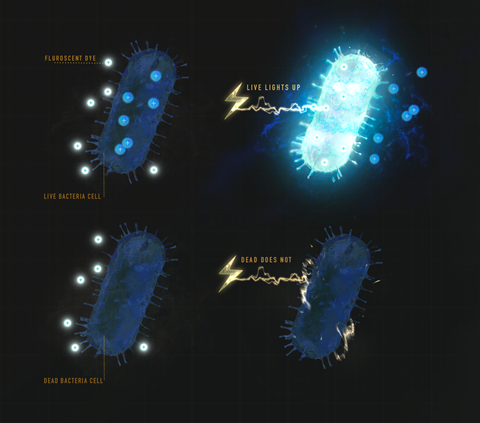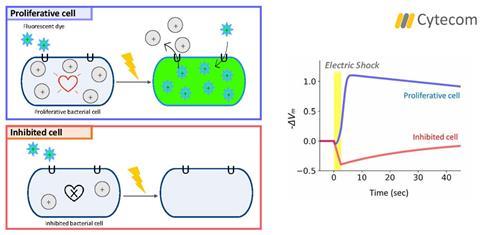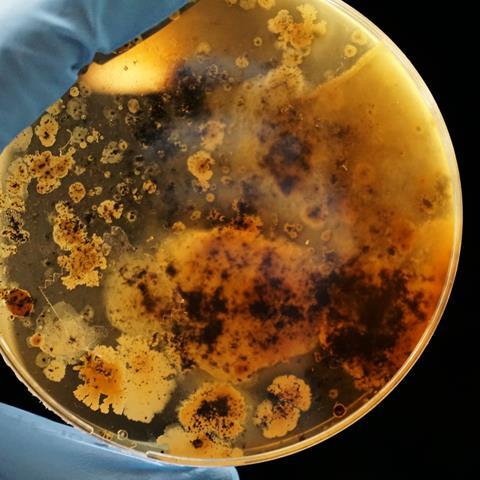Emilie Cummerson is a University of Warwick student who has just completed a year-long placement in the Sagona Lab and the university’s spinout company Cytecom. Whilst there, her research was focused on phage therapy and rapid antibiotic susceptibility testing.
Why is this research so important?
Antibiotic resistance is one of the most significant threats to humanity with an annual total of 10 million deaths expected by 2050. It is imperative that research goes into novel treatments, rapid diagnostics and antibiotic stewardship. My work involved research into novel treatments in the Sagona Lab, as well as rapid antibiotic resistance diagnostics at Cytecom. This experience was highly gratifying as well as interesting, as I knew this work could lead to saving lives.
Can you tell us about your work on phage therapy in the university lab?
During my time in the Sagona Lab I investigated the effect of phage on different clinical isolates of bacteria. The clinical isolates had been taken from patients who had antibiotic resistant bacterial infections around prosthetic joints. The novel phages had been extracted from the local sewage treatment works in Finham, Coventry. One way I measured the phage efficacy of killing the bacteria was by observing the optical density of bacteria over time under treatment with different phages to produce killing curves. After testing many different phages, we found that one was particularly effective in killing Staphylococcus epidermidis, which is the major pathogen responsible for joint infections.

My role involved designing and setting up research experiments, data collection and analysis as well as lab maintenance. I found that the experience of being in a Biosafety Level 2 laboratory demanded for strong organisational skills and meticulous attention to detail. During this time, I also learnt how to employ statistical tests. Whilst I found this challenging, I really enjoyed it as I recognised that without good statistical analysis the results could be rendered meaningless. Furthermore, I created and followed standard operating procedures, ordered and maintained chemical stocks as well as used complex lab equipment and techniques, such as fluorescent microscopy, plate reader assays, PCR and gel electrophoresis.
What about your placement with Cytecom?
Cytecom are a University of Warwick spinoff company that developed the CyteCount device that can detect and count live bacteria in just 45 seconds. This is a huge improvement on the standard methods, which rely on outdated technology, such as growing bacteria which can take days.
The CyteCount method is based on cutting-edge technology called optical electrophysiology. Essentially, it shocks the bacterial cells with electricity. Live Bacteria fluoresce – they have a little disco if you like. But if the bacteria are dead, they won’t light up (no disco for them). Cytecom aims to develop a quicker antibiotic susceptibility test, to speed up current clinical pathways such as the blood culture pathway.

The nature of my work involved validating the CyteCount by testing susceptible and resistant strains of E. coli exposed to an antibiotic at various timepoints. Our aim was to determine if the CyteCount method was able to rapidly differentiate between resistant and susceptible bacteria. The CyteCount assay involves timelapse microscopy to measure bacterial responses to electrical stimulation over 45 seconds. The assay uses a membrane potential fluorescence dye. Live cells, which resist antibiotic treatment, give a characteristic hyperpolarisation response whilst susceptible cells, stressed by the antibiotic treatment give a depolarisation response. It was very exciting to discover that the CyteCount assay can in fact differentiate between susceptible and resistant E. coli strains in a matter of minutes, which is significantly faster than the other methods.

Moreover, I got to work on the commercial aspects of the company. I attended exhibitions to demonstrate the technology at the Francis Crick Institute, board meetings with investors and meetings with large diagnostic companies to discuss potential synergies. One of my favourite parts of the experience was helping with patient and public involvement and engagement (PPIE) activities. I developed science communication skills, creating presentations for PPI consultations and noted feedback from patients. PPI consultations are vital in understanding what the patients want and need, as well as instrumental in developing dialogue in the early development stages of the diagnostic device, to facilitate clinical trial recruitment later. This information, along with CyteCount data I helped produce, was used in grant application writing, which I am happy to say was successfully funded. Certainly, I grasped the day-to-day running of a startup and was actively encouraged to have a say in the direction of the company and research, which was exciting. This was eventualised by having access to a business course as well as marketing and website design webinars.
Did anything surprise you?
I was mostly shocked at how long it takes to bring a product to clinical trials and the clinical bedside. It can take up to 10 years to get through clinical trials, costing millions of pounds. Even then it might not get approved for use. I also did not expect to see such a difference between academia and a start-up company. I found that the start-up company was more fast paced and dynamic in comparison to academia.
How did the placement year impact you?
After learning so many skills I feel equipped to go into a variety of areas from research to business. I thoroughly enjoyed the PPIE work and would like to do something that involves that. Working in the pharmaceutical industry appeals to me and I know this experience will set me in great stead for a career there. I was hooked on the high-pressure environment of a start-up company, where everything moves fast, and changes occur daily!
Overall, I thoroughly enjoyed working in the research labs at Warwick and at Cytecom. I had never learnt about something so interesting or so many things at once. Notably, I am looking forward to seeing both institutes prosper as this is extraordinary technology that needs to be discovered and talked about. I would like to thank Dr Antonia Sagona, Dr Magdalena Karlikowska (CEO of Cytecom) and the team for giving me so much support and guidance.










No comments yet